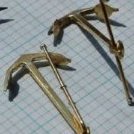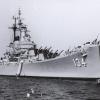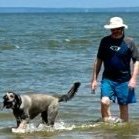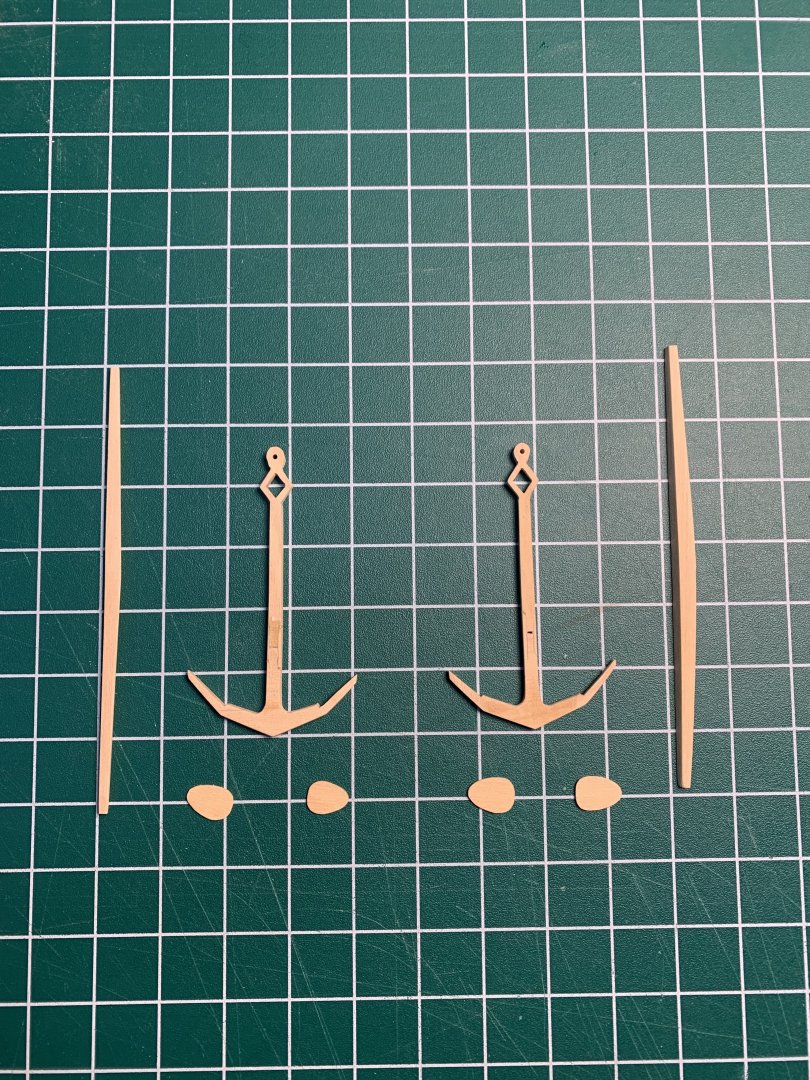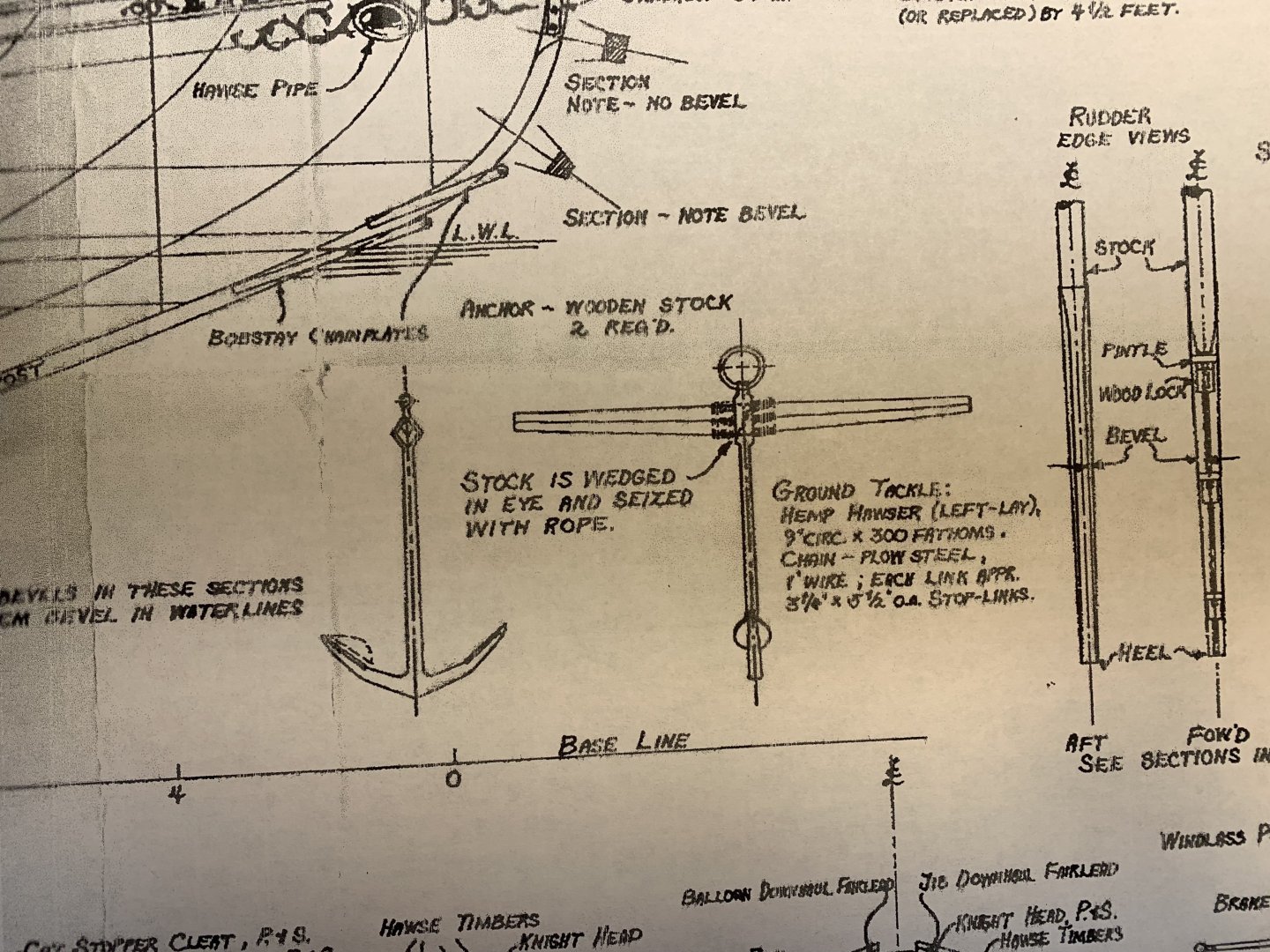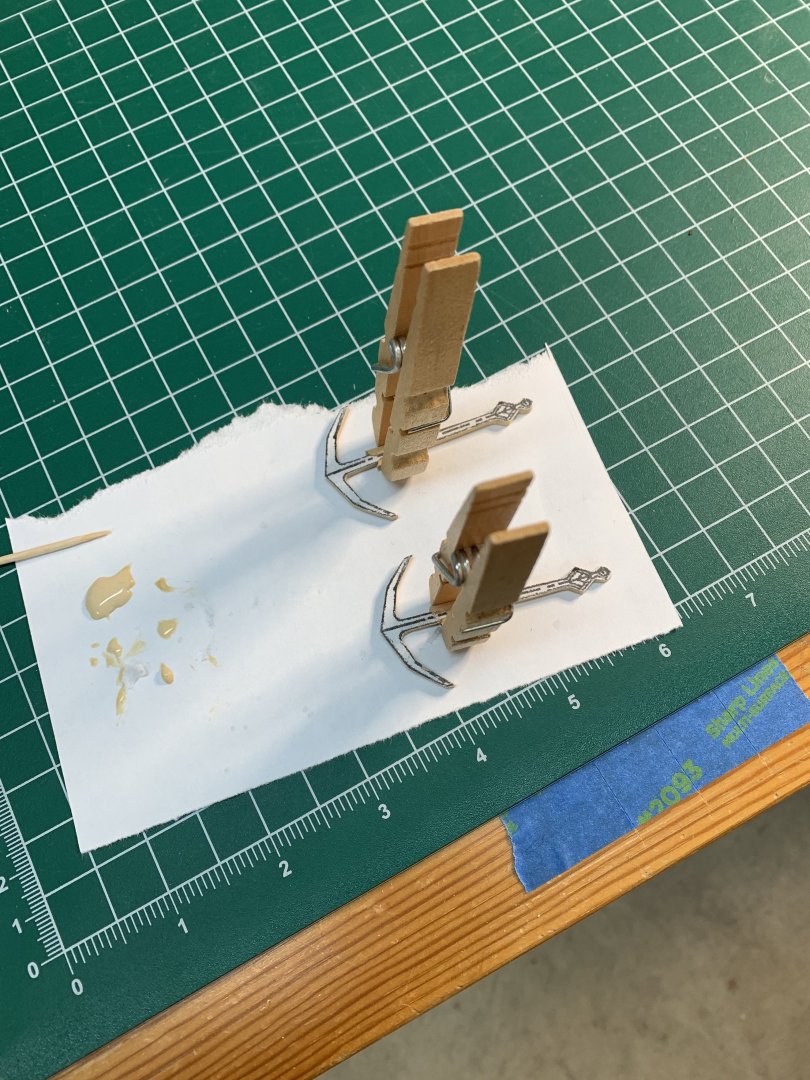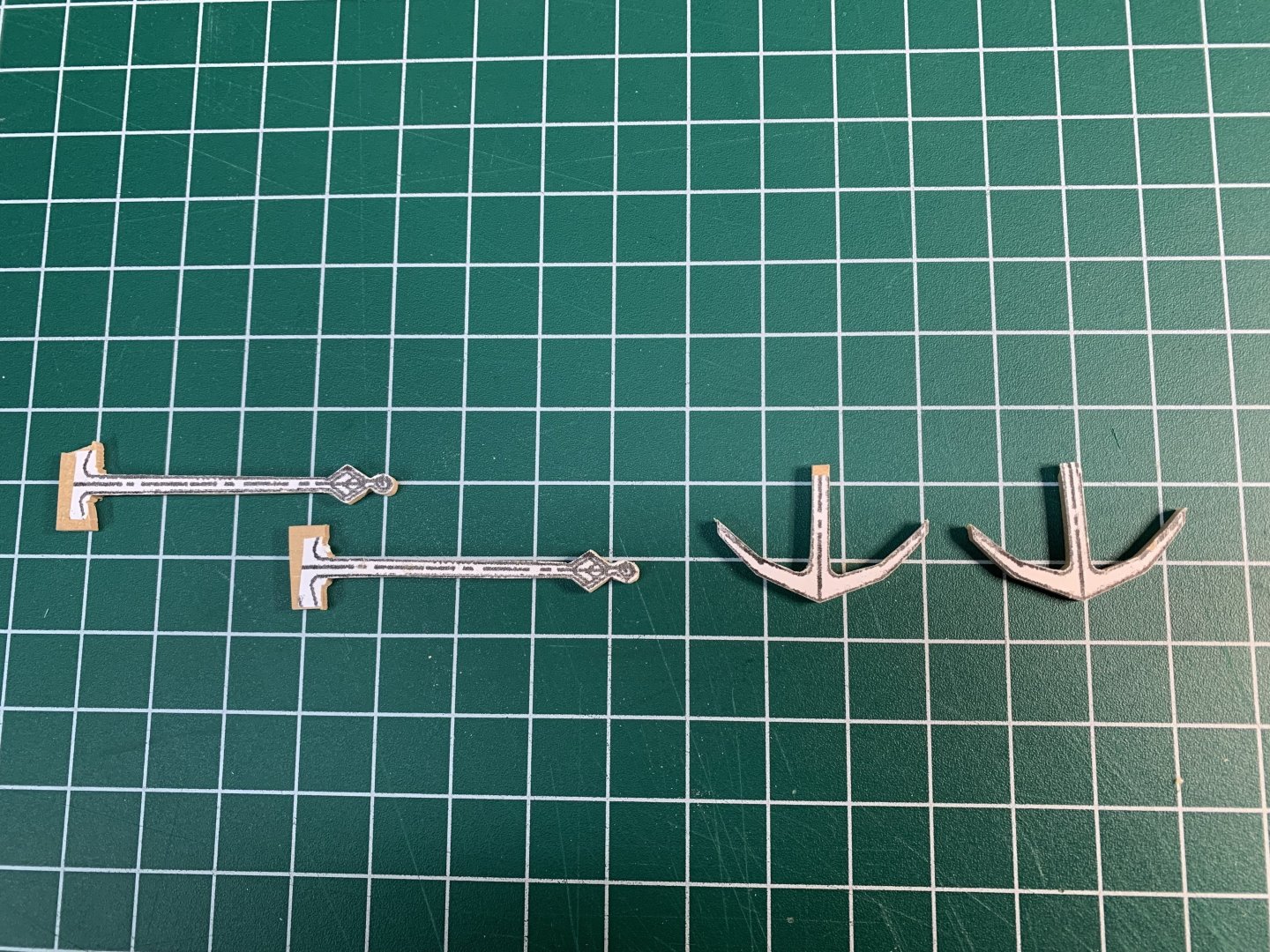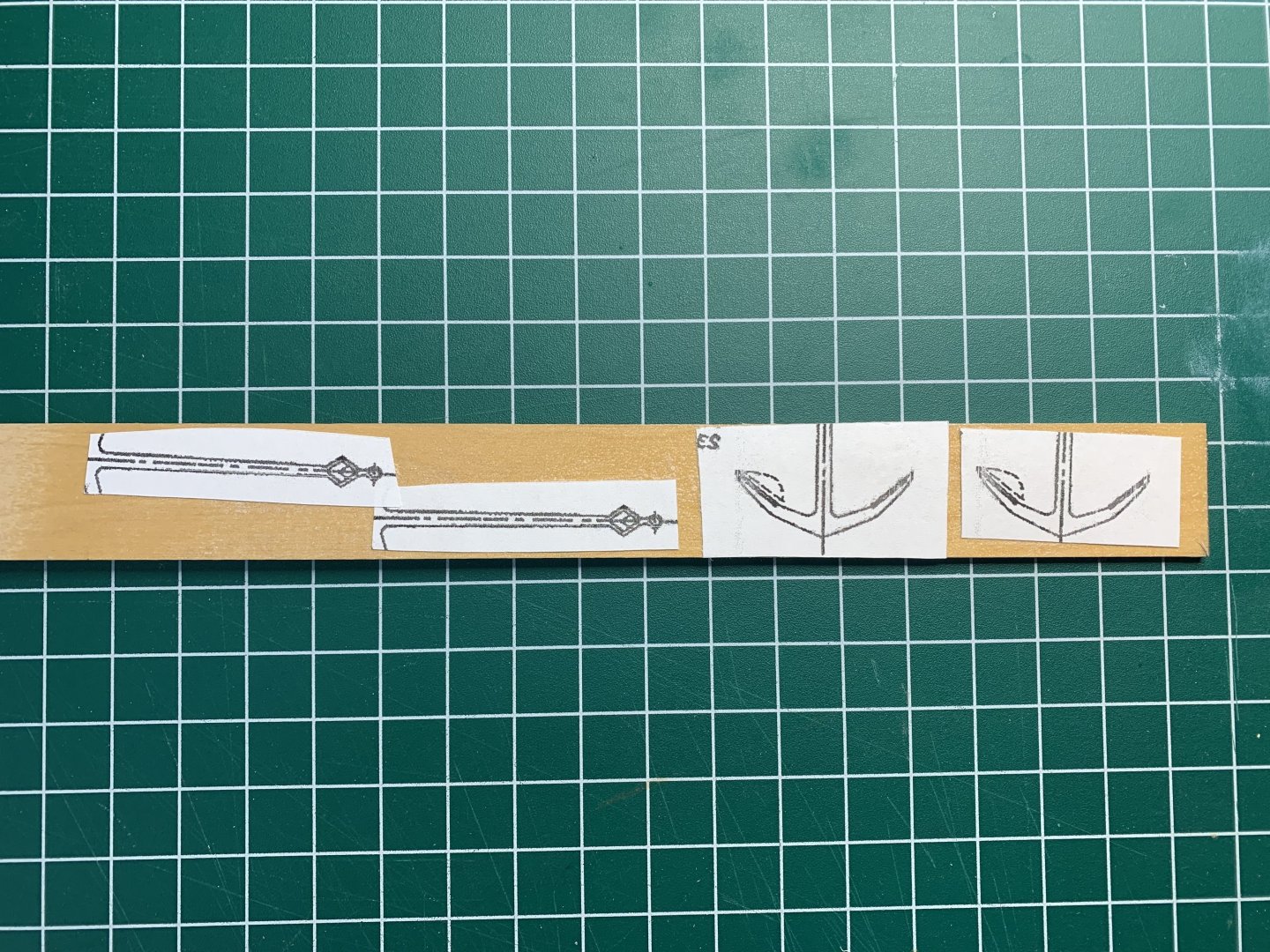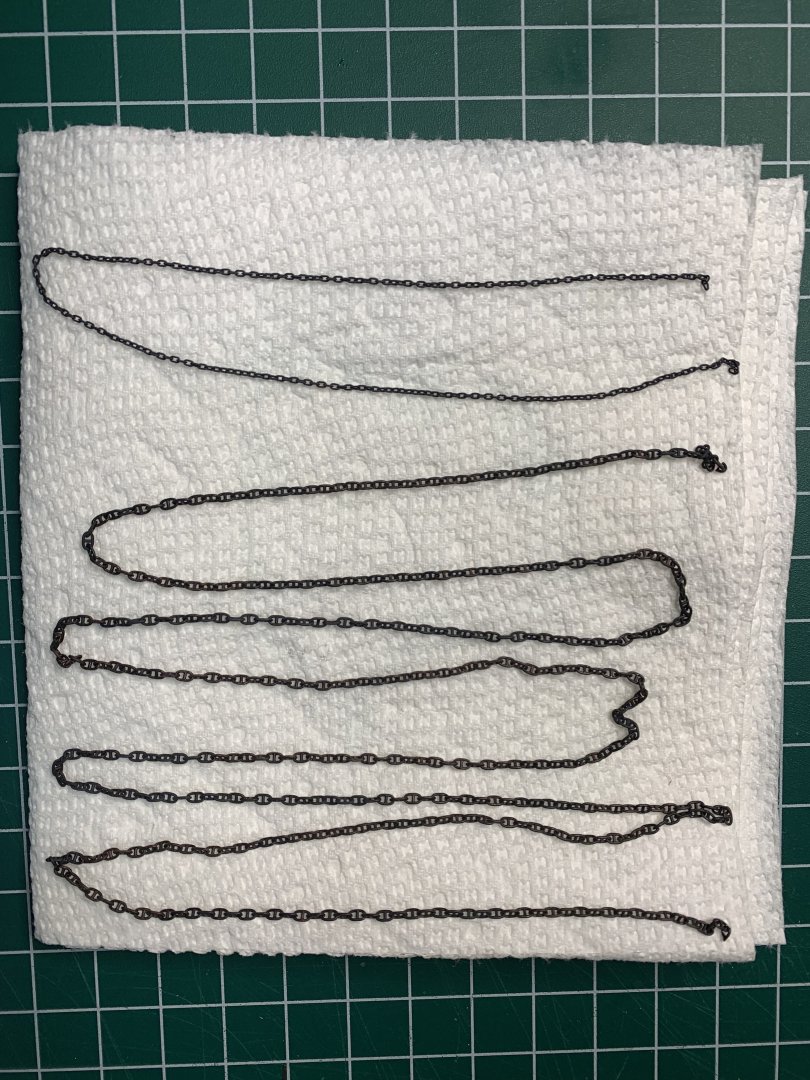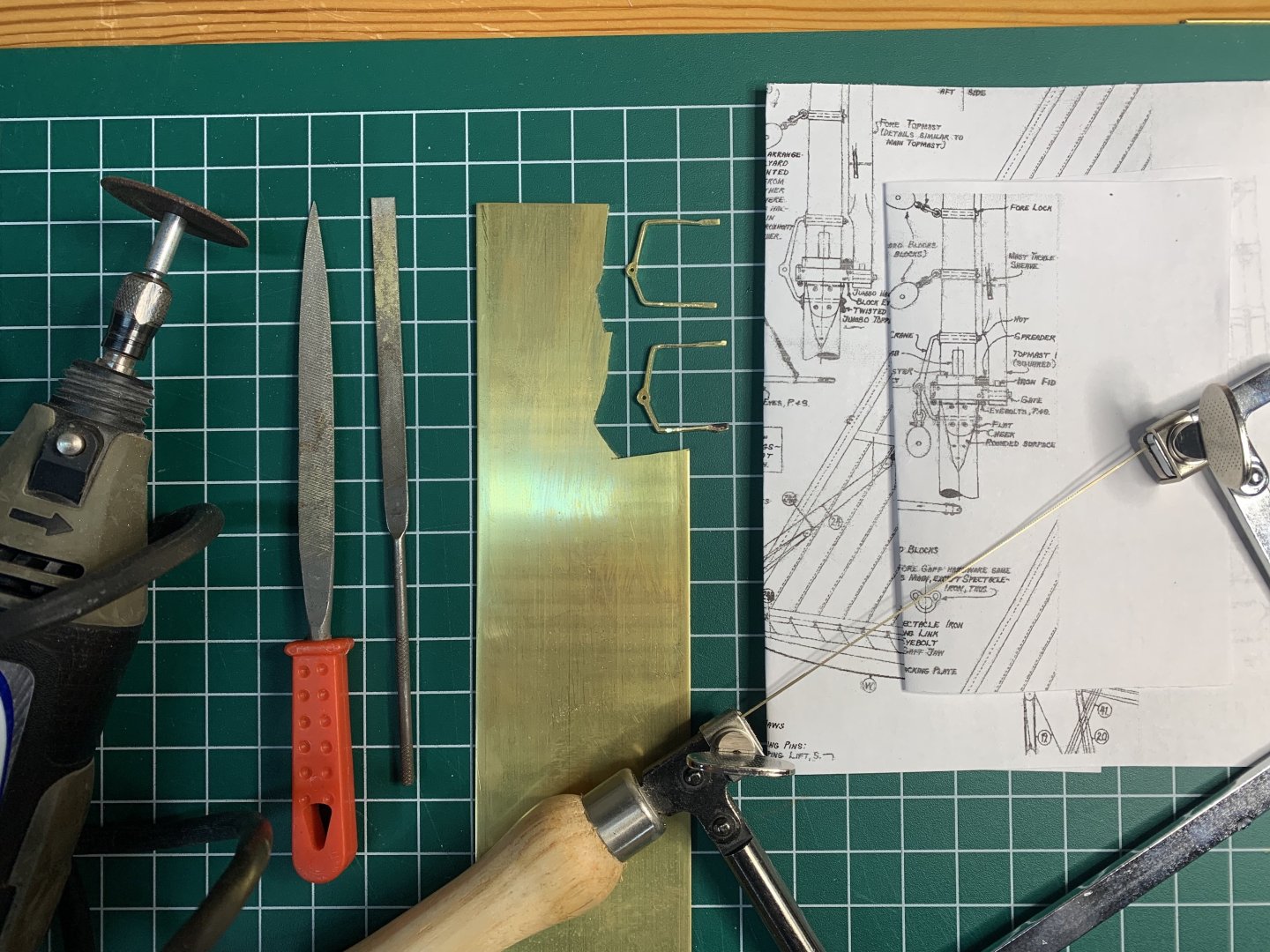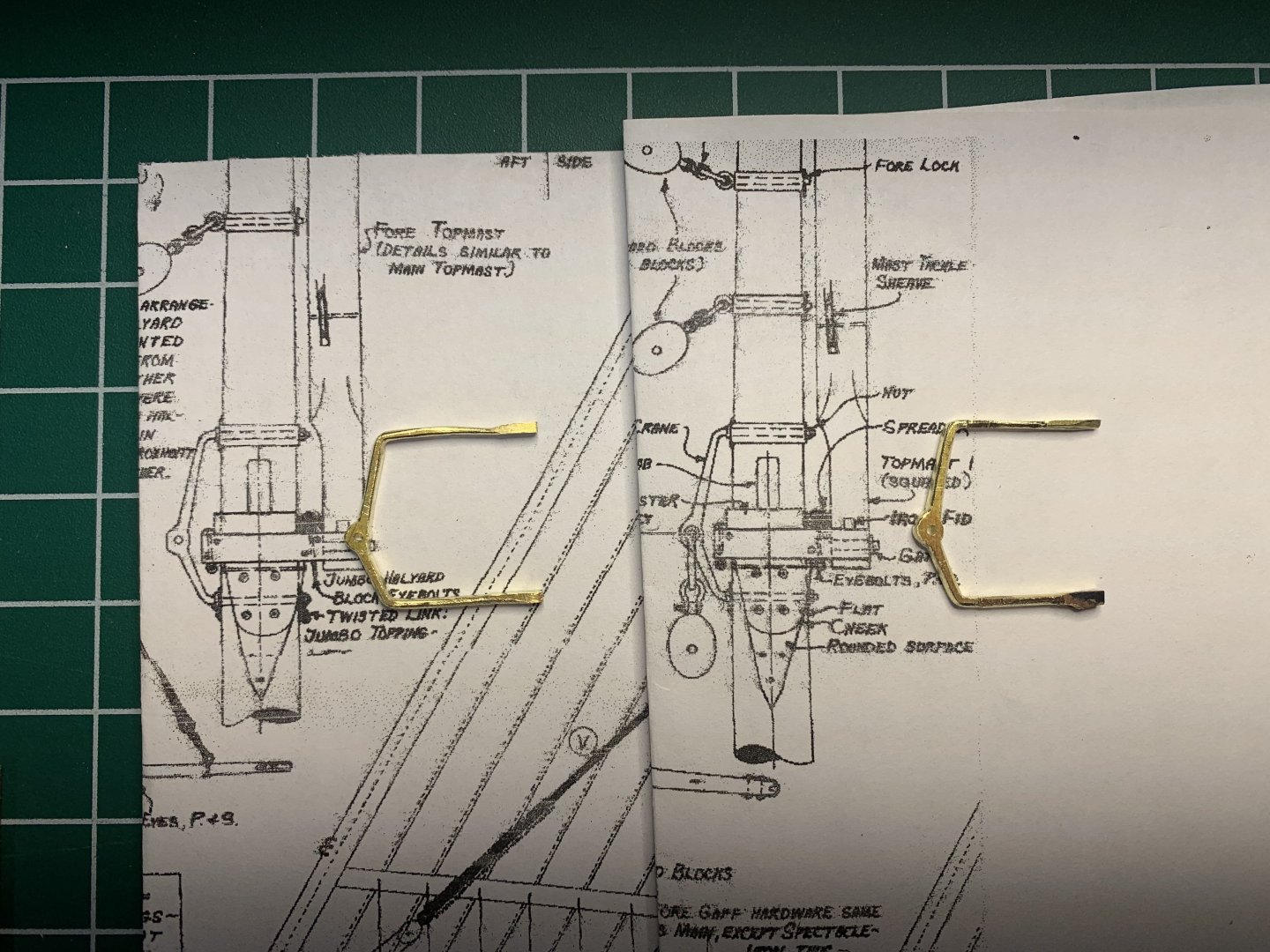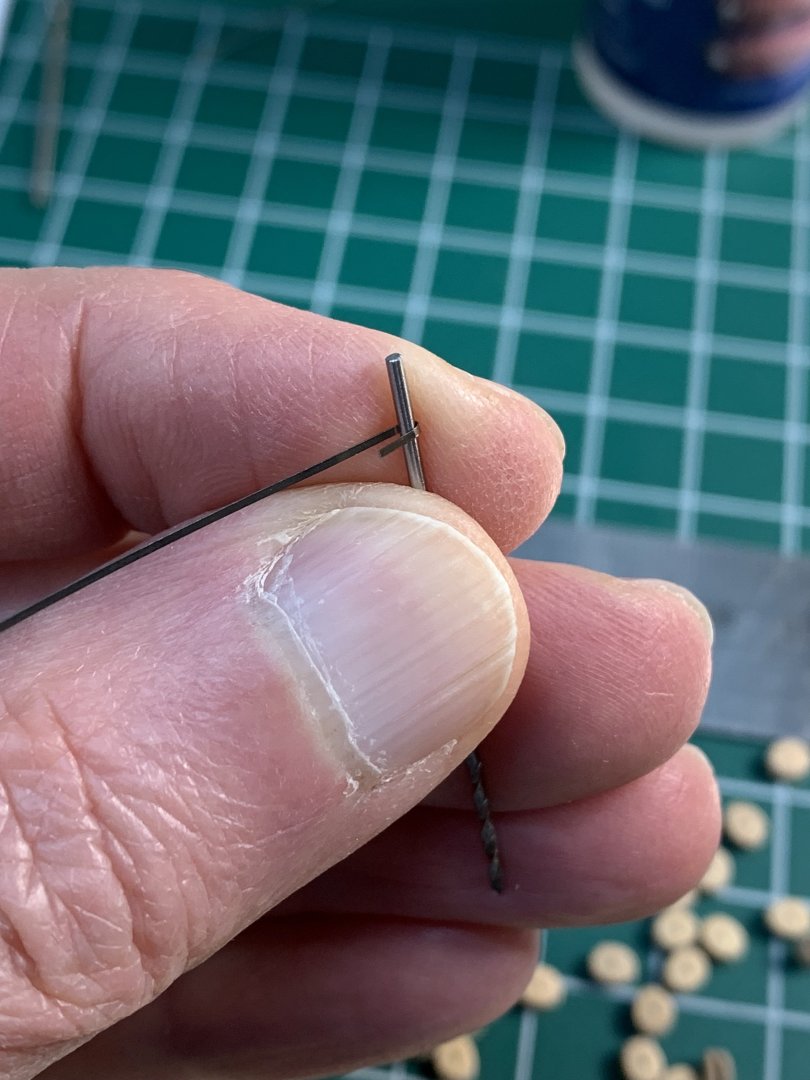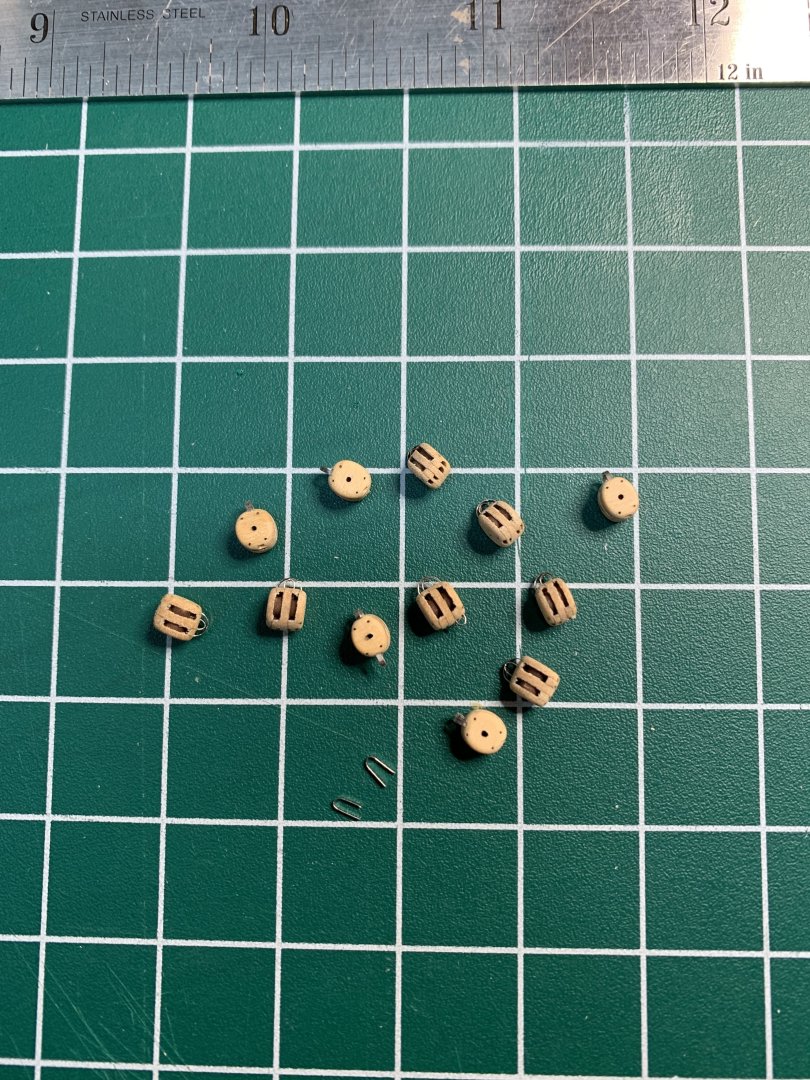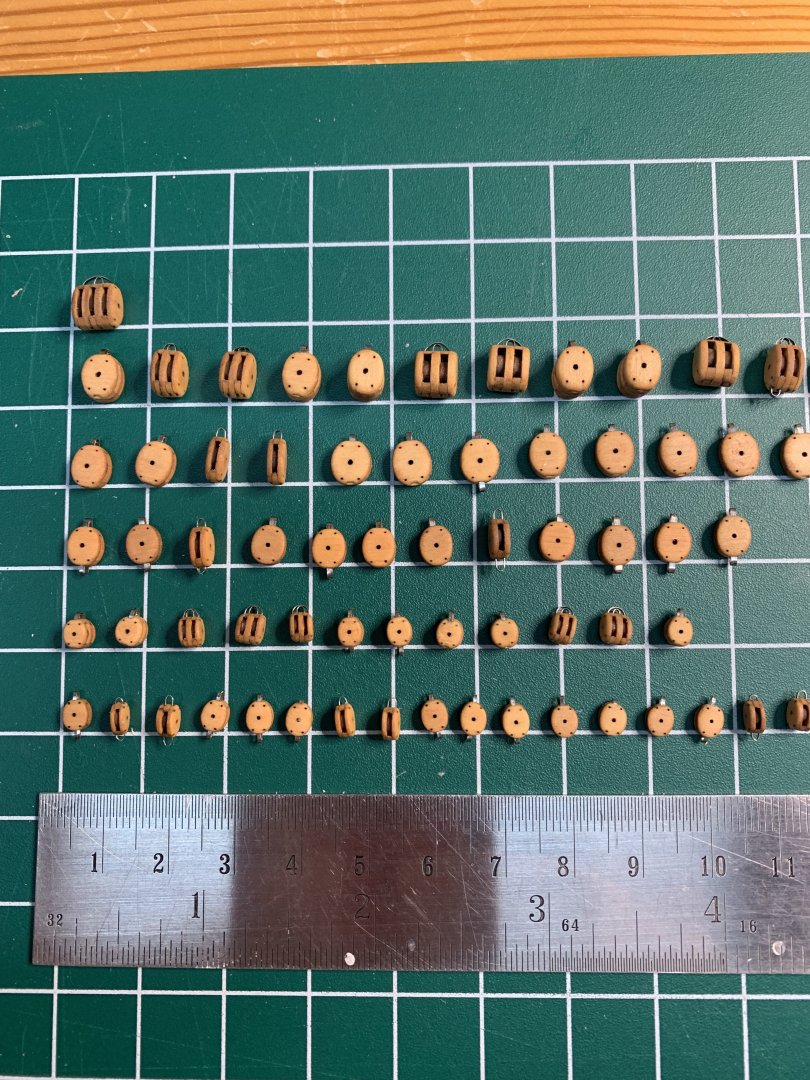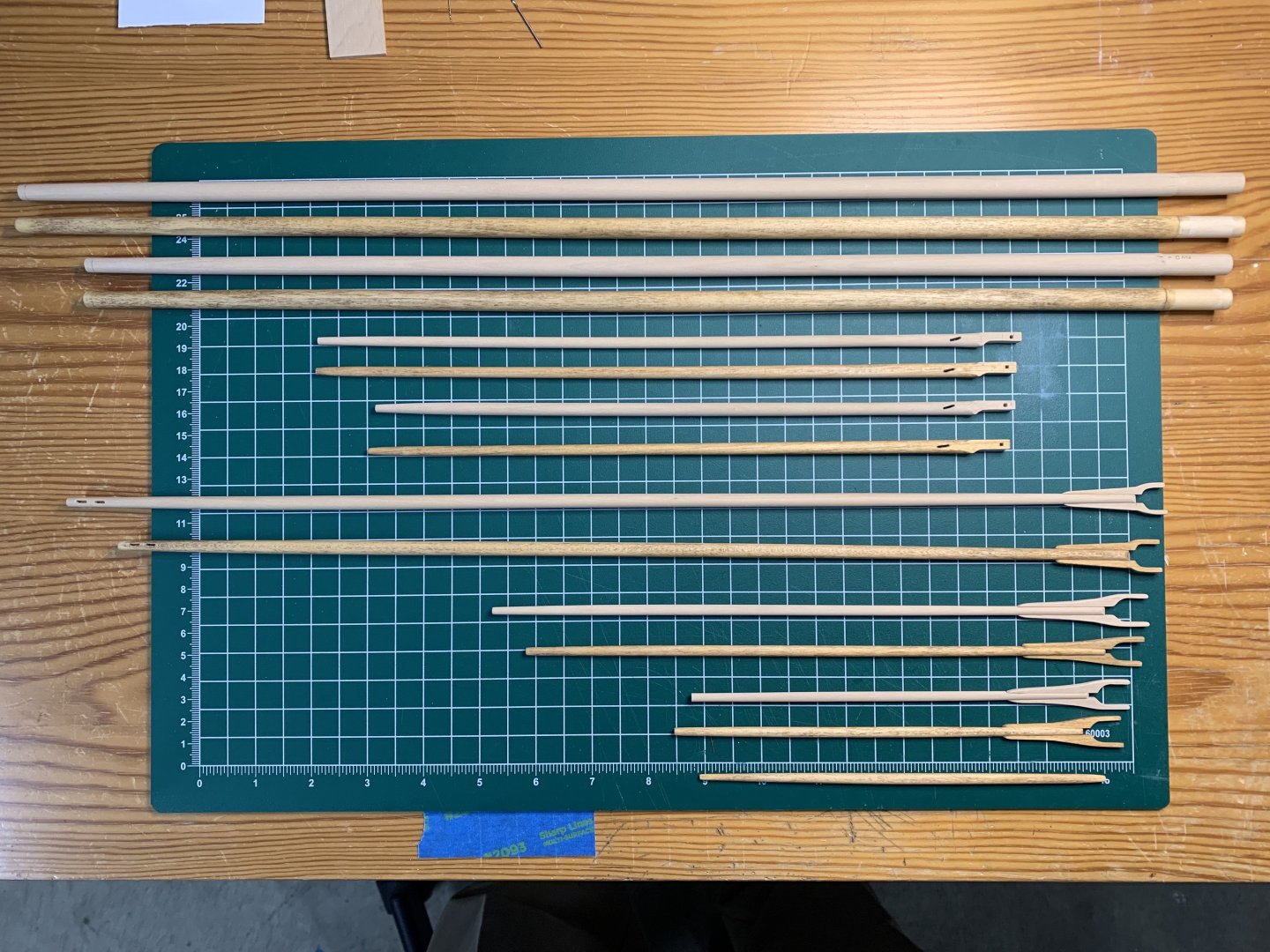-
Posts
548 -
Joined
-
Last visited
About Elia

- Birthday April 29
Profile Information
-
Gender
Male
-
Location
Rose Valley, PA
-
Interests
ship modeling, photography, bicycling, motorcycling, cooking
Recent Profile Visitors
-
 Elia reacted to a post in a topic:
Holding small parts for soldering
Elia reacted to a post in a topic:
Holding small parts for soldering
-
 Elia reacted to a post in a topic:
Bluenose by TerryPat - Model Shipways - 1:64
Elia reacted to a post in a topic:
Bluenose by TerryPat - Model Shipways - 1:64
-
 Elia reacted to a post in a topic:
Bluenose by TerryPat - Model Shipways - 1:64
Elia reacted to a post in a topic:
Bluenose by TerryPat - Model Shipways - 1:64
-
 Elia reacted to a post in a topic:
Bluenose by TerryPat - Model Shipways - 1:64
Elia reacted to a post in a topic:
Bluenose by TerryPat - Model Shipways - 1:64
-
 Elia reacted to a post in a topic:
Bluenose by TerryPat - Model Shipways - 1:64
Elia reacted to a post in a topic:
Bluenose by TerryPat - Model Shipways - 1:64
-
 Elia reacted to a post in a topic:
Bluenose by Retired guy - Model Shipways - scale 1:64
Elia reacted to a post in a topic:
Bluenose by Retired guy - Model Shipways - scale 1:64
-
 Chuck reacted to a post in a topic:
Arethusa 1907 by Elia - Knockabout Banks Fishing Schooner
Chuck reacted to a post in a topic:
Arethusa 1907 by Elia - Knockabout Banks Fishing Schooner
-
 KeithAug reacted to a post in a topic:
Arethusa 1907 by Elia - Knockabout Banks Fishing Schooner
KeithAug reacted to a post in a topic:
Arethusa 1907 by Elia - Knockabout Banks Fishing Schooner
-
 KeithAug reacted to a post in a topic:
Arethusa 1907 by Elia - Knockabout Banks Fishing Schooner
KeithAug reacted to a post in a topic:
Arethusa 1907 by Elia - Knockabout Banks Fishing Schooner
-
 KeithAug reacted to a post in a topic:
Arethusa 1907 by Elia - Knockabout Banks Fishing Schooner
KeithAug reacted to a post in a topic:
Arethusa 1907 by Elia - Knockabout Banks Fishing Schooner
-
 KeithAug reacted to a post in a topic:
Arethusa 1907 by Elia - Knockabout Banks Fishing Schooner
KeithAug reacted to a post in a topic:
Arethusa 1907 by Elia - Knockabout Banks Fishing Schooner
-
 KeithAug reacted to a post in a topic:
Arethusa 1907 by Elia - Knockabout Banks Fishing Schooner
KeithAug reacted to a post in a topic:
Arethusa 1907 by Elia - Knockabout Banks Fishing Schooner
-
 KeithAug reacted to a post in a topic:
Arethusa 1907 by Elia - Knockabout Banks Fishing Schooner
KeithAug reacted to a post in a topic:
Arethusa 1907 by Elia - Knockabout Banks Fishing Schooner
-
 rlb reacted to a post in a topic:
Arethusa 1907 by Elia - Knockabout Banks Fishing Schooner
rlb reacted to a post in a topic:
Arethusa 1907 by Elia - Knockabout Banks Fishing Schooner
-
 CiscoH reacted to a post in a topic:
Arethusa 1907 by Elia - Knockabout Banks Fishing Schooner
CiscoH reacted to a post in a topic:
Arethusa 1907 by Elia - Knockabout Banks Fishing Schooner
-
 CiscoH reacted to a post in a topic:
Arethusa 1907 by Elia - Knockabout Banks Fishing Schooner
CiscoH reacted to a post in a topic:
Arethusa 1907 by Elia - Knockabout Banks Fishing Schooner
-
Hi Ron, It’s good to see you here! I completely understand. I’ll go find your Oneida to check in on it. Mine came home after many years and I now have to find a good place to display it. Fully masted and rigged, and cased, it takes up a non-trivial amount of space.
-
Hi Bob, It’s good to see you here! I highly recommend finding a way to get back to it. I took some time to review where I had left off, and think about next steps or things I wanted to replace because of displeasure in what I had modeled before. I’ll admit that being unhappy with some model detail and considering whether to replace it or not can lead a paralysis. Not good. Anyway - I hope to see you working that Bluenose schooner again soon!
-
Anchors For the anchors of Arethusa years ago Erik Ronnberg recommended I use the Model Shipways plans for Elsie he had designed and drafted years before. They were built in the same timeframe, just a few miles apart, and shared many details of the time. With that guidance I purchased said Elsie plans and headed over to FedEx/Kinkos to enlarge the plans from their original 1/96 scale to my 1/48 scale. With the plans at the correct scale there were a number of details I could readily use on Arethusa. I also try to cross reference things to Chapelle’s American Fishing Schooners, and they almost always do, as did the anchors. Here is an image of the Elsie plans showing the anchor. I had tried, unsuccessfully, to make them, years ago, from a stout sheet of K&S brass. This time I decided to try making them from boxwood. The sticks of boxwood I have aren’t wide enough to cut the anchors as complete, single entities from a strip of stock, so I chose to separate the end with the flukes from the main shank (shaft) and stock hole feature. Here is a photo of the plans glued with contact adhesive to the boxwood strip. Next up is a photo of those details now trimmed to shape. I used my DeWalt scroll saw, followed by files, and then sanding sticks, to shape them. I cut notches in the sides of the shafts on both pieces and glued small lap splice details. I’ll admit - this felt a bit precarious as the boxwood details felt delicate. This photo shows them being glued together. My most recent status is shown in the following photo. The anchors, particularly at the splices, have been sanded smooth, and rebates have been sanded in where the flukes will be glued. Following that is photo of the anchor chain and a finer chain after having been blackened with Blacken It (from many years ago).
-
Throat Halliard Cranes On Gloucester fishing schooners of the late 19th and early 20th centuries the set of blocks which raise the mast end of the gaffs where secured to the lower masts with a unique iron detail called a throat halliard crane. It is bolted to the aft side of the lower masts, found on both fore and main masts. Its general shape is very wide U with a feature for the detail which secures the blocks, oriented with the legs of the U horizontal. Those legs are long bolts which pierce through the mast and secured by nuts on the forward side of the mast. The upper leg reaches over the mast head details, and the lower leg beneath. This is one of those details I pondered over for years. I didn’t think making them from wood would be sufficiently strong for the purpose. I could have made them from brass wire, though some soldering would be needed and I wasn’t sure I could pull them off while still looking reasonably to scale. This year I decided - what the heck - lets see what sheet brass I had laying around (from years ago!), and see if I could cut them out that way. A piece of 0.072” thick was what I had on hand; A little thicker than to-scale, which would have been 0.060”, but I’m fine with that. I recall trying to make my anchors from the same brass sheet many years ago. I broke a lot of jeweler’s saw blades then, and dropped it long ago, very frustrated. Once again - I searched through MSW and found some good discussions on using jewelers saws to cut brass. I thank Weflack and others for those pointers! I also found a good video on Youtube of a guy demonstrating key points of cutting brass sheet with a jeweler’s saw. I think age also plays a part here in that I am in much less of a hurry than my earlier days, and am willing to let the saw do the work, not pushing it too hard, etc. A key take away is to keep the blade oiled on a regular basis. I had sprayed some contact adhesive onto the brass sheet, then secured my profile prints onto it. I found that the oil tended to loosen the profile image over time, so I tried to just cut the inside of the U with the image adhered to the brass sheet as closely as possible. As I went along the outside I tried cutting a little wide, knowing I could use my dremel and files to bring it back to a proper size. I used a courser file to remove material faster, and then a finer file to smooth things out. The second photo shows the two cranes adjacent the plan images (from the Model Shipways Elsie plans). My cranes’ legs are a bit too wide, when compared to the plans, but I’m fine with that. A little more clean up of the bolt portions, some primer and silver paints, and they’ll be good to go.
-
Blocks. My prior experience with blocks was on Blue Jacket Shipcrafter’s Smuggler model, which had their detailed, cast Brittania blocks, and on my Oneida model, where I used Warner Woods wooden blocks. Both experiences were good. One required some finish sanding and trim, along with painting. The others required sanding and staining. For Arethusa I began my blocks journey by making an inventory of the full size block types and quantities, and then finding what was available, as close to scale as possible, at 1/48 scale. I first purchased my entire shipset of blocks from Blue Jacket. They are really great looking blocks. And I had intended to use them for Arethusa. I then saw Syren Ship Model Company’s internally stropped blocks. Oh I liked the look of those! If you look back to my posts of 2017 you’ll see I had begun making some of those internally stropped blocks. These are great little mini-kits, and can yield some impressive looking scale assembled blocks. I, again, purchased what I could, scale-wise, from Syren, and began assembling them. To finish them I purchased the block tumbler from Model Expo. And that is where I ran into some “issues”. The block tumbler has a rigid central core and four wooden paddles with sand paper on them. For those of you who haven’t worked with one of these, you place your blocks into the jar, between the paddles, secure the lid, and you attach your hand drill to the tumbler’s shaft. Power it up and you are in business. But - at almost every speed - my blocks came apart, beaten to pieces. I was very disheartened, to say the least. After some time I came around to ordering more of Chuck Passaro’s blocks, hoping to find a solution to the tumbler problem. I also want to give a shout out to Chuck for trying to help a modeler out. On the small end of my blocks, I had 1/8” long model scale singles and doubles. His block kits stop at 3/16” long - which are pretty small if you have ever worked with them! He tried coming up with a kit for 1/8” blocks and just couldn’t get it to work properly. I really thank him for trying. He even gave me a packet of his 1/8” long machined wooden blocks. Great guy, great business - if you haven’t yet - give Syren a try. Really nice modeling stuff there. I reassembled my second set of Syren internally stropped blocks. Before trying that tumbler again (!!!) I searched MSW for ‘tumbler’, and lo and behold there was discussion of the problems with the rigid wooden paddles of the Model Expo tumbler. Chuck Passaro mentioned substituting just sand paper for the paddles, and Dr PR showed his mod of the tumbler, where the paddles were removed and replaced with sand paper. Thank you guys! I followed their lead, modified my tumbler, and voila! My blocks stayed together and were very nicely smoothed. By the way, Dr PR’s Albatros model is outstanding - go check it out! I trimmed and glued the strops and beckets with medium CA, and then stained them with Minwax Colonial Maple. I’m very happy with them. I still have the pins to add and then they’ll be complete. On the small end of the scale I tried using the 1/8” wooden ones Chuck provided, and tried making doubles from singles, but without success. So I’ve decided to go with the small Blue Jacket Brittania ones for these. I’ve got them cleaned and primed, and hope to get a brown tone that won’t look horrible next to the attractive, assembled boxwood ones. Some things I’ve learned from making a bunch of Syren’s block kits: Medium CA and a round toothpick, or a micro tip for the CA bottle, work well for gluing the pieces together. Strive, as best as you can, to align the frames perfectly on top of each other as you glue the pieces together. Any misalignment can be corrected with sanding the exterior surfaces, BUT you’ll have to sand to the lowest (innermost set) surface to get all of the laser burn off. If you don’t sand all the way to the last surface you’ll end up with steps and ridges - not all that attractive to my eyes. This can result in some parallelogramming of block shape. In the last photo you can see some of this on a few of the blocks. Its more pronounced with the smaller blocks. Using a sanding stick hit all of the exterior surfaces, to remove the burn, and to even it out before using the tumbler. The tumbler is best for rounding the corners of the blocks. Do not glue on the strops and beckets before tumble sanding the blocks. The 3/16” blocks are pretty small and my fingers cramped constantly trying to hold them while sanding the outer surfaces (step 3, above) I found using a small drill bit helped me form the strops into clean hoops which aligned with the slots in the blocks. I used different sized drill bits for the different sized blocks. Make a few extra in each size. One or two may fail along the way and its good to have ready made spares. The boxwood blocks take stain well! In the photo below you can see, upper photo to the bottom, 9/16” doubles, singles, a triple I made from extra 9/16” kits, 1/4” singles, and a pile of 3/16” singles and doubles. I love the way these look, and know they’ll complement the model nicely upon rigging.
-
Hi Chris, Thanks! It’s good to see you here. Yes, it’s been some time. It’s good to be back at it. I still have that Smuggler model. It sits in my workshop, providing inspiration, maybe, during slow times. In looking at it, it displays some beginning modeler efforts ;). I haven’t put a case over.. I probably should. Hi Dr PR, Thanks for the heads up. I noted that, and tried fixing it last night. It may be the image format. I took photos with my iPhone, then airdropped them to our older iMac. The image type wasn’t something I’ve seen before as I viewed them in the downloads folder. I’ll try converting it, and the others, today and then try editing my post to correct that. Thanks again!
-
Sometimes in modeling I set off down a path, only to find I did something that I quickly didn’t like. My masts and spars are one of those things. I had made them from basswood, and I had stained them with a minwax oil based stain (maybe Puritan Pine). I quickly saw two things I didn’t like: one - the color of the stain can didn’t translate to the basswood like I had thought it would, being too brown, but without a warm cast, and two - the basswood had far too much dark and light patchiness. I stewed on it a bit, and after having seen many models here on MSW made of Costello boxwood, I thought that that wood’s tight graining and evenness of tone would be what I was looking for. One build log, Mahuna’s beautiful skipjack Kathryn, showed Costello boxwood and minwax Colonial Maple mast and spars - exactly the tone and look I wanted! If you want to see some outstanding modeling, go search it out. Thank you Frank for sharing that. It has the look of varnished spars I want on Arethusa. I bought some boxwood from Gilmer Woods during the pandemic, and recently set about making new masts and spars. I find that it’s a good thing to make masts and spars every five to ten years, just to keep one’s hand in it. ; ) Here’s a photo of the old and new masts and spars. I have one last small spar to complete. I had tried doing a little mortise in the sides of my first boxwood one and split it apart, so another is in-progress. I’ve also made new masthead details from the boxwood, replacing the old basswood ones. On these schooners there is little to the mastheads, so that was enjoyable and fairly quick and easy to do. I haven't yet stained the spars, but have done some trial staining of the boxwood and the Colonial Maple will work out fine.
-
My goodness, where has the time gone? As you can see by my last post, of about a year ago, I thought then that I would find time to rekindle my ship modeling hobby. Life, of course, plays by a different set of rules. My last true time working on my schooner details was 7 years ago. Since then, well, life intruded. Helping with aging parents, raising children, with their attention and activities, work, home projects, health issues.. sometimes it’s difficult to find time to do the things we enjoy. Without going into details, I’m finally back at it in my shop (which I spent some time tidying up so that I could comfortably work on my model). I recall someone years ago, here on MSW I think, say to a modeler who hadn’t been able to get to his modeling in quite some time that (I’m paraphrasing) ‘the model waits patiently’. And it does. I see a few of the modelers from year ago still here and active, which is great. I also note a few older members have passed on, some who I had hoped share modeling and further progress of Arethusa with, and that leaves me a little melancholy. My schooner model sat wrapped in plastic, on its box stand; my research and plans were safely stored away; my little details, and masts and spars, also waited patiently. And this past Christmas holiday break I was able to get to it in earnest. Some observations of mine include: I’m not getting any younger! My eyesight is worse than before, and my Optivisor is a godsend. Without it my work might resemble a deconstructionist thing. My thumbs have the onset of arthritis, and that hinders tool manipulation. And I can’t sit for as long as I had. Such as all of those are, man it is great to be working on my model again. You’ll see some posts in the near future on a few things I’ve been working at: new masts and spars; rigging blocks; the anchors; and my attempt at making throat halliard cranes from thick brass sheet. And one last thing to point out. I have been surfing through MSW in search of suggestions on different topics. As you all know this place is amazing. One can find any number of helpful tips. I’ll try to note the ones which helped me in my posts, and thank everyone for contributing to community.
-
Allan, I’ve just (re)found your Effie build log after too many years, following through your progress to its conclusion. I remember when you started this many years ago. Your model is so sharp. The colors and wood tones, the ironwork details, the rigging and sails all look great and complement each other. Your attention to detail shows. Congratulations on this beauty of a build! Elia
- 86 replies
-
- schooner
- effie m morrisey
-
(and 1 more)
Tagged with:
-
Hi Nils, and thank you. I can’t believe I put this log in MSW almost 11 years ago. Once our kids became active hobbies like this collected some dust. I’ve begun on it again, backtracking a little bit, fixing a few things I wasn’t happy with. Maybe more to come, here in the month(s) ahead. Elia
-
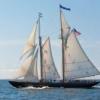
Seeking input on case refinishing
Elia replied to Elia's topic in Painting, finishing and weathering products and techniques
Roger, Thanks for the additional information. John, The mirror floor is different and sharp. That does impart an airy feel, and I’ll bet it provides reflected light onto the lower hull and planking, usual in the shadows. The planked floor is clever and different too. In my ‘case’ I’m not sure that would help solve my issue of the planked hull being overwhelmed by the large wooden case. Thanks for those! Elia -

Seeking input on case refinishing
Elia replied to Elia's topic in Painting, finishing and weathering products and techniques
Roger, The case of mine shown is a type of mahogany. It’s fairly grainy. I believe it is finished with just a coat or two matt or satin urethane (it’s been 14 years since I made it and I don’t recall). I really like your case’s stain color. I am fascinated by the technique. The chemicals evaporate, becoming a mixed gas in the closed chamber, and somehow muddle etch the copper sheet? Were the chemical evenly spread on the cloth or blotted here and there? The muddled effect, maybe a bad way to describe it, looks great. Do you recall how long it took? Thanks, Elia -

Seeking input on case refinishing
Elia replied to Elia's topic in Painting, finishing and weathering products and techniques
Roger, Oh that is quite nice! It works well with the frame wood tone (stain?). Elia -

Seeking input on case refinishing
Elia replied to Elia's topic in Painting, finishing and weathering products and techniques
John, That is very attractive and sets the light colored model off well. My case is pretty large, and I have a concern of a very dark case frame being too much of an eyesore for the size of the room it’s in. I see this endeavor as trying to make the case not complete with the model (in tones and grain), though also not be too visually grabbing or jarring within the room. A balancing act as it were. Thanks, Elia -

Seeking input on case refinishing
Elia replied to Elia's topic in Painting, finishing and weathering products and techniques
druxey, I’m afraid my rendition of faux marble finishing might be distracting from the model, though not in a good way. It would most certainly be cheaper than the real stuff! Thank you, Elia
About us
Modelshipworld - Advancing Ship Modeling through Research
SSL Secured
Your security is important for us so this Website is SSL-Secured
NRG Mailing Address
Nautical Research Guild
237 South Lincoln Street
Westmont IL, 60559-1917
Model Ship World ® and the MSW logo are Registered Trademarks, and belong to the Nautical Research Guild (United States Patent and Trademark Office: No. 6,929,264 & No. 6,929,274, registered Dec. 20, 2022)
Helpful Links
About the NRG
If you enjoy building ship models that are historically accurate as well as beautiful, then The Nautical Research Guild (NRG) is just right for you.
The Guild is a non-profit educational organization whose mission is to “Advance Ship Modeling Through Research”. We provide support to our members in their efforts to raise the quality of their model ships.
The Nautical Research Guild has published our world-renowned quarterly magazine, The Nautical Research Journal, since 1955. The pages of the Journal are full of articles by accomplished ship modelers who show you how they create those exquisite details on their models, and by maritime historians who show you the correct details to build. The Journal is available in both print and digital editions. Go to the NRG web site (www.thenrg.org) to download a complimentary digital copy of the Journal. The NRG also publishes plan sets, books and compilations of back issues of the Journal and the former Ships in Scale and Model Ship Builder magazines.


